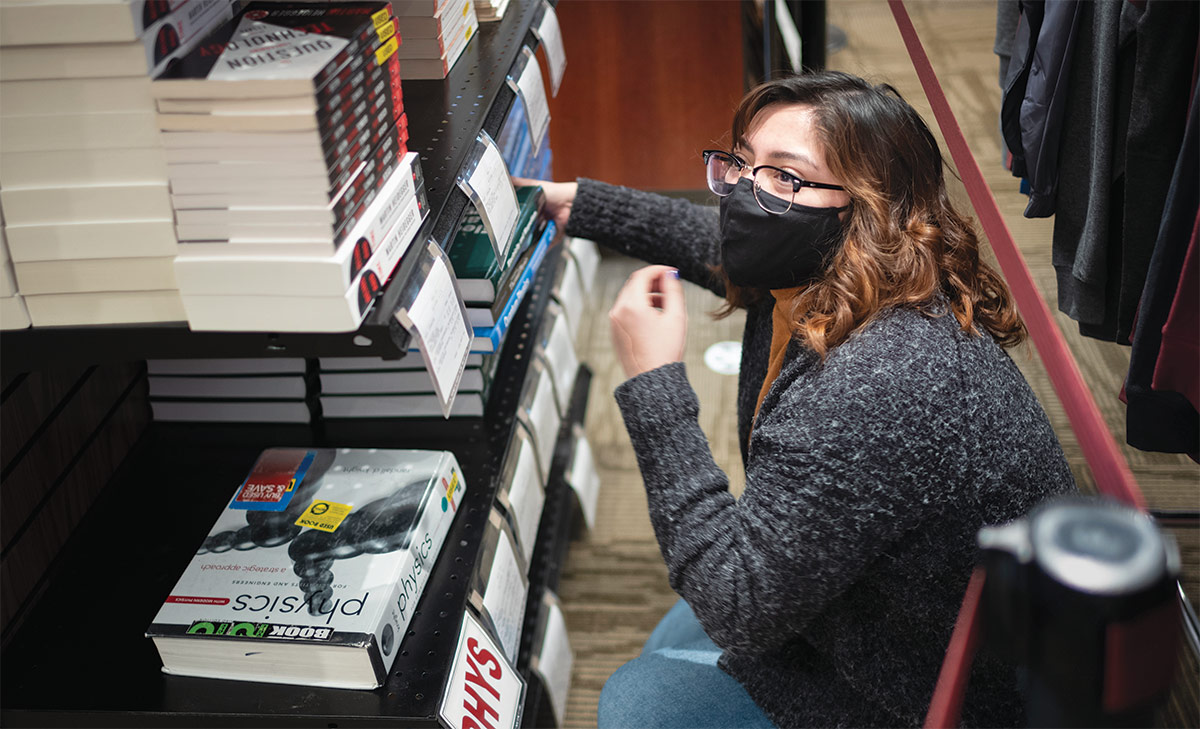
Tapping into Affordability
hen Aleina Dume ’23 was preparing for her first year at Swarthmore, she knew she needed to have money saved to buy books and other course materials — an expense that typically costs hundreds of dollars a semester.
“I had taken a summer job before Swarthmore, preparing for all those costs,” says Dume, a first-generation college student from Queens, N.Y. “At the same time, I didn’t want to spend all my money on books because there were so many other things to buy for college.”
Situations like Dume’s are not unique to Swarthmore, especially as textbook prices have soared. For years, Swarthmore’s libraries have helped to cover this gap by making textbooks available to borrow. But a new College initiative will further narrow the divide by assisting students in purchasing course materials.
Launched this fall, the Textbook Affordability Program (TAP) provides every Swarthmore student with a $700 annual credit that can be used on required materials at the Swarthmore Campus & Community Store. Besides textbooks, the money can be applied toward other supplies deemed required for a course as noted in the syllabus.
“It’s one less thing to worry about,” Dume says. “There are so many things happening right now beyond normal college-life responsibilities. It’s nice to not have that pressure.”
Historically, textbook costs have been listed in financial aid packages as a “non-billed” out-of-pocket expense, with Swarthmore students and families expected to contribute up to $1,400 annually for required course materials. But work-study programs that could help cover these costs don’t typically start until after courses begin, notes Greg Brown, vice president of finance and administration.
To explore options, the College convened the Textbook Affordability Committee in 2016. The panel reviewed textbook-assistance programs at peer institutions to develop a pilot program for Swarthmore. Partnering with the Swarthmore Summer Scholars Program (S3P), the pilot provided 62 S3P students with a $400 credit for each of four semesters to spend on required course materials at Swarthmore’s bookstore. In exchange, the students were surveyed while their expenses were tracked.
The feedback was overwhelmingly positive, says S3P Director Amy Cheng Vollmer, the Isaac H. Clothier Jr. Professor of Biology. In survey results after two semesters, with an 80% response rate, 100% of responding S3P students said they were satisfied with the program, with only five or six having required materials that exceeded their $400 allotment.
The fully launched TAP is now provided to all Swarthmore students, regardless of whether they receive financial aid. Although the total annual credit was reduced slightly to help it stretch across the student body, any leftover balance from the $700 allotment carries over from fall to spring, allowing for greater flexibility in covering semester costs.
The College had planned to roll the additional expenses for TAP into student tuition. However, even with tuition frozen due to the coronavirus, TAP was fully approved for the 2020–21 school year.
Above all, Brown says, TAP is about diversity, equity, and inclusion — and about helping all Swarthmore students thrive. “It’s not enough to get into Swarthmore; it’s more important that we make sure that students succeed,” he says. “The barriers created by not having textbooks just goes in the face of who we say we are as an institution, so it was absolutely essential for us to get up in front of this.
“It was a problem, and it was within our bandwidth to fix it.”